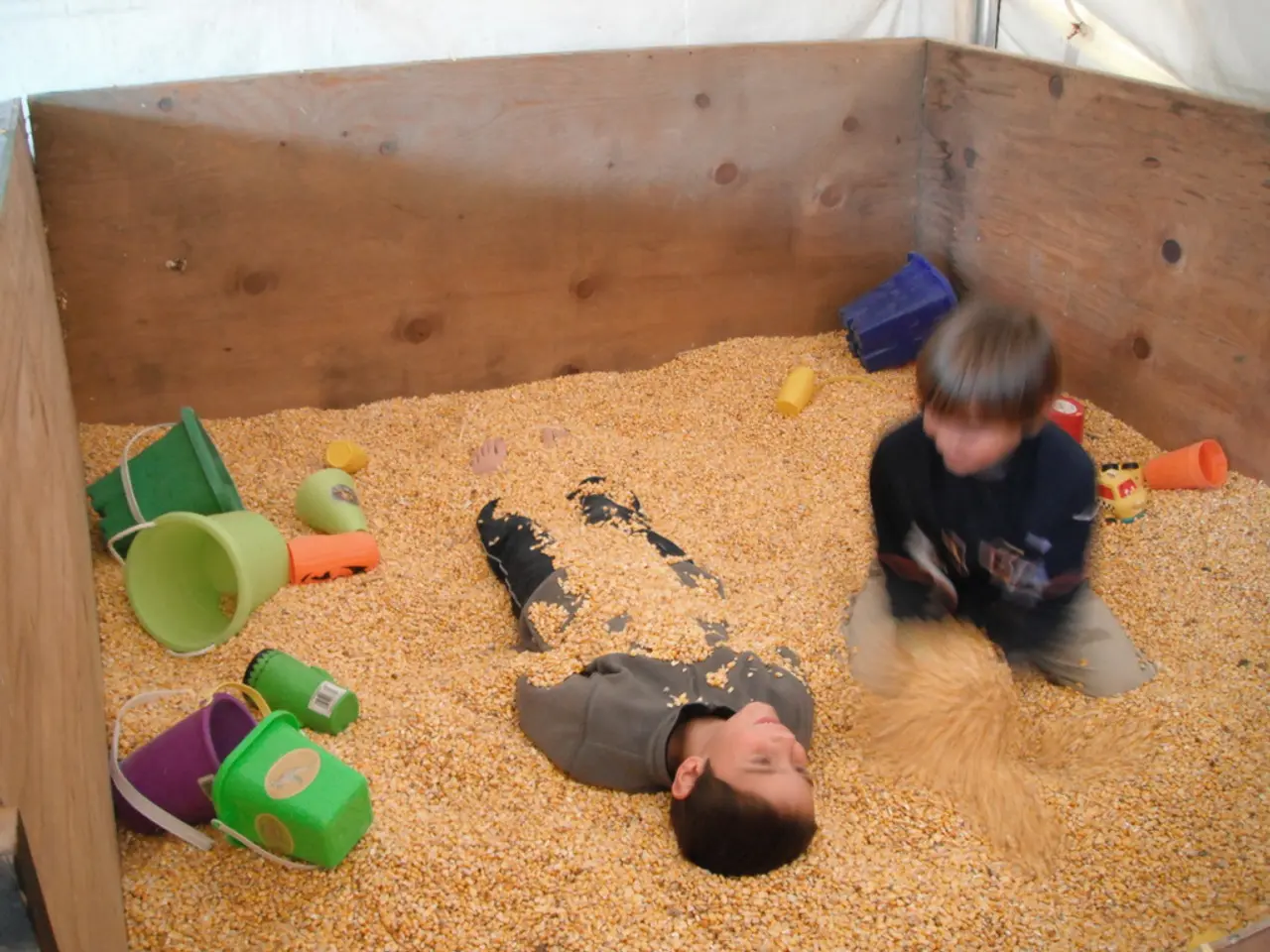Sensory Bin with Integrated Magnet Play
Creating a Magnetic Sensory Bin for Kids: A Fun and Educational Activity
Are you looking for a creative and engaging way to introduce your little ones to the world of science? Look no further than the magnetic sensory bin! This hands-on activity is perfect for children aged 2-6 years and offers a fun and interactive way to explore the property of magnetism.
To create a magnetic sensory bin, you will need a shallow container, magnetic discs and wands, sensory-friendly materials like moon sand, play sand, or cloud dough, and a plastic bin. Here's how to make one:
- Choose a sensory base/filler: Common fillers include rice, dried beans, sand, or small pom-poms. For a magnetic sensory bin, make sure the filler materials are non-magnetic and safe for children to handle, such as colored rice or dry beans.
- Add magnetic objects: Include magnetic pieces like magnetic building blocks, metal objects (safely sized to avoid choking hazards), or magnetic tiles. A popular option is a magnetic building blocks set designed for children aged 6 and up, which promotes STEM learning and creativity.
- Include a magnetic wand or magnet wand tool: Kids can use this to manipulate magnetic objects within the bin. For example, a magnet wand can move magnetic marbles under the filler or guide magnetic items through the sensory material, combining fine motor skills with sensory play.
- Add themed items for engagement: Consider a theme such as animals, shapes, or vehicles that incorporate magnetic parts to make the play more interesting and educational (like building geometric shapes or exploring simple engineering concepts).
By combining safe sensory fillers with magnetic toys and tools, you can create an engaging, hands-on learning experience that develops fine motor skills, problem-solving, and creativity through playful magnetic exploration.
As your little ones delve into the magnetic sensory bin, they will discover that metal is one of the objects that magnets are attracted to, while sand is not. They can watch the magnet disc come up out of the sand and stick to the wands, providing an opportunity to discuss magnet attraction to certain objects. Additionally, they will learn that magnets have a north and south pole, also known as positive and negative attraction. Depending on which end of the magnets are put together, they will either stick or push away.
This activity is a fun way to explore the science of magnets and the property of attraction without teaching kids anything explicitly. It can be used to go over colors with younger kids and to discuss the texture of the sand. Sensory bins are also used as transition activities or during quiet time to help kids relax.
Remember, it is important to ensure young children are supervised and instructed on how to play with the magnets and sand to prevent any accidents. Select eco-friendly and safe materials like non-toxic ABS plastic magnetic blocks for durability and safety.
For more science experiments, visit our Super Cool Science Experiments for Kids page. The materials from the magnet sensory bin can be used in various ways for continued play, such as a sensory bottle. Use the magnets for additional science-themed play, such as exploring the magnetic properties of different metals.
In conclusion, the magnetic sensory bin is an enjoyable and educational activity that encourages children to explore, learn, and play in a fun and engaging way. Happy experimenting!
Experience life-long learning by creating engaging activities at home, such as science experiments, lifestyle projects, home-and-garden projects, and education-and-self-development activities. For instance, try making a magnetic sensory bin that teaches kids about the fascinating properties of magnetism. This sensory bin, designed for children aged 2-6 years, combines safe sensory fillers with magnetic toys and tools to promote fine motor skills, problem-solving, and creativity while offering an enjoyable, hands-on learning experience.
After completing the magnetic sensory bin activity, augment your child's exploration by incorporating educational themes into the play or utilizing the separate components for other DIY projects, such as creating a home-and-garden project or pursuing additional self-development activities. This approach not only nurtures your child's curiosity and creativity, but also fosters a love of learning that lasts a lifetime.




